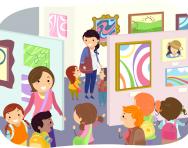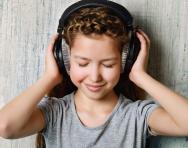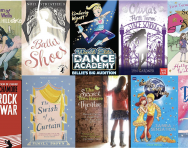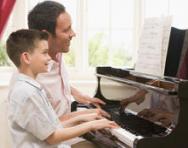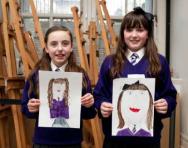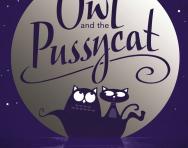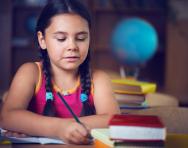Why arts education matters in primary schools
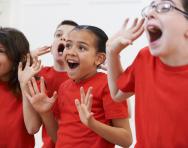
In the early years of primary school, barely a day goes past without your child bringing home a brightly coloured painting or elaborate junk model, or singing a new song.
But as they progress through primary school, many children find more of their time taken up by core academic subjects, at the expense of the arts.

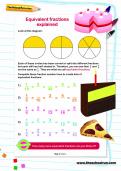
Start a unique learning programme!
- Weekly programme for each school year
- Worksheets sent direct to your inbox
- Keeps your child's learning on track
In 2019, a survey of primary school teachers found that two thirds believed arts education – incorporating art and design, music, drama and dance – was in ‘dramatic decline’, and half felt the remaining provision was poorer than in 2010.
Many arts education organisations, including multi-arts charity Creative Futures, believe that this is to children’s detriment.
‘The arts are increasingly being squeezed out of our children’s education to make way for a greater focus on core subjects such as literacy and numeracy,’ explains Julian Knight, Creative Director of Creative Futures. ‘But this narrowing of the curriculum fails to meet the needs of many pupils.’
Why primary school arts matter
Despite the fact that arts education is becoming less and less valued in primary schools, it has a huge range of benefits for children of all ages.
Arts education: literacy and numeracy
Spending time embracing the arts has proven benefits for children’s academic performance.
‘We know that participation in structured arts can increase cognitive ability and help many children do better at school,’ says Lizzie Crump, Co-Director of the Cultural Learning Alliance.
According to Cultural Alliance research, children who engage in the arts thrive at school. Indeed, arts education contributes to raising attainment in maths and literacy.
For example, studying a work of art involves children describing what they see, expressing how it makes them feel, and discussing what the artist’s motivation might have been. In producing their own art, they consider numeracy concepts like angles, scale and perspective.
Music, meanwhile, involves literacy skills like listening, describing and questioning, and concepts related to maths such as identifying patterns, structures and timing.
Arts education: learning styles
Many children work best if their learning is varied and multisensory – something that arts education delivers hugely successfully.
‘The arts can provide a way into learning, particularly for children who struggle with core subjects or with set approaches to learning, especially in the first years of school,’ says Julian.
Arts education: understanding the world
Education is so much more than just learning to read, write and recite times tables; it also helps children understand the bigger picture.
‘Arts education gives children the opportunity to explore the world around them, to learn about and appreciate their cultural heritage, to collaborate, be creative and express themselves in ways that many other subjects don’t,’ explains Julian.
This might be in the classroom – for example, listening to world music and thinking about the culture of other countries – or out and about, such as on a visit to a museum or gallery.
Arts, mental health and emotional skills
It’s a sad fact that by the time they leave primary school, one in five children have experienced some form of mental health issue.
Arts education is an important tool in improving mental wellbeing. According to Dame Benita Refson, President and Founder of Place2Be, the children’s mental health charity, the creative processes involved in music, drama dance and the other arts help children work through their problems and find ways of coping.
‘It can also be a welcome chance to switch off from the many pressures young people find themselves under in today’s society,’ she says.
Julian agrees that children gain important skills for emotional wellbeing through the arts. ‘It can bring shy children out of their shell, give non-verbal children the confidence to speak out, develop social skills and interact in a collaborative way, and help them to express themselves,’ he says.
Arts education: physical health and development
Over one in five children is overweight or obese in the first year of primary school, according to the Royal College of Paediatrics and Child Health, and spending time on arts subjects give children the chance to move, be active and develop physical skills.
The arts offer opportunities to be physically active, developing gross motor skills, stamina and agility through dance and drama, and fine motor skills and hand-eye coordination through drawing, painting, modelling or learning an instrument.
Arts education and life chances
Teachers and parents alike often focus on the core academic subjects as predictors of children’s future success, but actually, children who have a rich grounding in the arts are more likely to vote, go to university, and get a job and keep it in their later life.
Why arts education is being squeezed out of primary schools
Sadly, despite the numerous benefits, many primary schools are finding it hard to deliver good arts education, for a number of reasons.
SATs and performance measures: primary schools are increasingly compelled to focus on attainment, as measured by SATs, concentrating on the core subjects.
‘The vast number of accountability measures means schools are having to focus narrowly on English, maths and science, at the expense of a broad and balanced curriculum that includes quality arts provision,’ says Lizzie.
Funding: ‘Schools have lost a huge amount of funding,’ Lizzie explains. ‘They’re being asked to deliver a rounded curriculum, without the necessary resources . A loss of focus on the arts is an unintended consequence of overburdening schools.’
Inadequate teacher training: in secondary schools, teachers are specialists, meaning that those teaching art, music, drama and dance have been trained specifically in their subject.
In primary schools, however, teachers tend not to be specialists.
‘A primary school teacher might have half a day of music training as part of their studies, and then be expected to deliver music lessons to a class of 30,’ says Lizzie.
Focus on STEM: STEM subjects (science, technology, engineering and maths) are often seen as stepping stones to a glittering career in an increasingly tech-based world.
This means that primary schools often focus on STEM to the detriment of the arts, and this continues into secondary school, where, at GCSE level, students are under no obligation to take an arts subject.
But while the STEM careers market is thriving, this doesn’t mean arts aren’t important.
‘The creative economy is the fastest growing sector in the UK economy, made up of professions like architecture, advertising and design, film-making, IT and games development, as well as the more obvious performing arts vocations,’ Julian explains.
‘Parents shouldn’t be afraid that a focus on arts subjects dooms their child to a penniless adult existence!’
How schools can promote arts education
There’s a wide range of opportunities for primary schools to deliver quality arts education alongside the core subjects. These include:
Including arts under the STEM umbrella – STEAM – and appreciating the many ways STEM subjects and the arts interact and support each other. For example, designing and making a model with moving parts requires children to think artistically as well as scientifically.
A cross-curriculum approach: arts can easily be explored in the context of core subjects – for example, listening to world music as part of geography lessons, or using drama to bring stories to life in English lessons.
Music initiatives such as the First Access/Wider Opportunities scheme, which gives every pupil in a given class the chance to learn an instrument for one academic year.
National campaigns like Take One Picture. Run by the National Gallery, each year, a picture is chosen from the Gallery and schools engage in activities around that picture, with the opportunity for pupils’ work to be displayed in an exhibition.
Applying for an Artsmark Award: the creative quality standard for schools, with a framework for embedding creativity across the curriculum and a clear set of criteria to fulfil.
Encouraging teacher training in arts subjects as part of their continuing professional development.
Inviting visiting artists, actors and musicians to lead assemblies or workshops with children.
Arranging arts-based field trips that tie in with class topic work, like visiting a gallery or museum, or going to see a play or concert.
‘A lot depends on the school,’ says Lizzie. ‘Many primary schools deliver an amazing arts-rich education, but others need more help and support.’
Supporting arts education at home
‘The more arts activity that happens at home, the better,’ says Julian. ‘It’s great for children, and is a good way for parents to interact with children that isn’t homework or using a screen.’
Here are 10 ideas to support arts learning at home – and they don’t need to cost a fortune (or anything at all!).
1. Seek opportunities to engage in arts activities and events in your area: ‘There are lots of free things happening in museums, libraries and local venues,’ Julian suggests.
2. Make something: junk models made with the contents of the recycling box, clay creations, Hama beads, decorated biscuits (plain digestives work well), or jewellery.
3. Look online for how-to videos: many renowned children’s illustrators have YouTube tutorials teaching kids to draw or paint.
4. Consider instrument lessons: within schools, these are usually paid for by parents, but lower income families who receive free school meals may be able to access lessons with their Pupil Premium funding – this is something to discuss with their school. Otherwise, find out what’s on offer at your local music centre as they may offer free or subsidised lessons.
5. Experiment with creating using different mediums and tools: painting with coffee, printing with potatoes or halved fruit, making papier mache, finger painting.
6. Change your radio station: listen to Classic FM, Last FM or Scala Radio, 1xtra or Premier Gospel to expose your child to a wide range of genres.
7. Take advantage of after-school and extracurricular clubs: there may be an art club that your child could join, a school choir or band, or a ballet or street dance class.
8. Try a new creative hobby like photography (even if it’s just in your garden), stop-motion animation, designing clothes, or tie dye, or learning the ukulele.
9. Play creative family games such as Pictionary or Charades.
10. Get outdoors: the natural world is full of inspiration. You could listen to the sounds of nature and use them to inspire music compositions using actual instruments or improvised ones like pans and wooden spoons, or collect leaves, pinecones and seeds to create collages or try leaf-rubbing.

Give your child a headstart
- FREE articles & expert information
- FREE resources & activities
- FREE homework help

